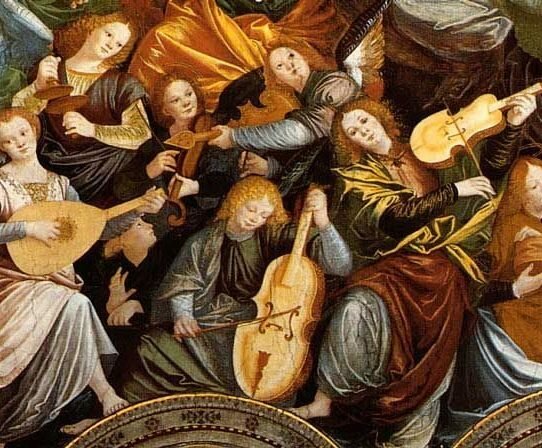The Violin Family
or
The Viola da braccio Family

The string instruments of the collection belongs principally to two important families, the viola da gamba family or viols and the viola da braccio family or violins. It is important to note that the two families – contrary to common opinion – are not related to each other: the viola da gamba is not at all a predecessor of the violin. Both families arose almost simultaneously and coexisted amicably for a period of three hundred years to produce some of the most wonderful music created by Western Culture.
The violin has commonly four strings, tuned in fifths. There are no frets on the fingerboard. It most likely evolved from the medieval vielle or rebec, played on the shoulder, for which reason the Italians named it “viola da braccio”, meaning “arm-viola”.
Although the instrument’s provenance is still a matter of conjecture, the first paintings of a violin were wrought by the exquisite Renaissance artist, Gaudenzio Ferrari around 1530 in the Province of Lombardy, Italy; in fact, the frescoed ceiling of the Saronno Cathedral bears a complete quartet of viole da braccio by this artist. Like all instruments of the Renaissance, the violin came in various sizes, corresponding to the ranges of the human voice:
– Violin – the soprano register
– Viola – the alto and tenor register
– Violoncello – the baritone and bass register
– Violone or Double bass – low bass register
– Viola d’amore – may be considered to be a special case of the violin, as is explained in its pages.
– Violin with five strings – a special case
The aristocratic viola da gamba disappeared gradually towards the end of the 18th Century. The violin, however, has come to embody the highest achievement of our Western musical tradition. The sound of our symphony orchestra centers around this family of instruments.